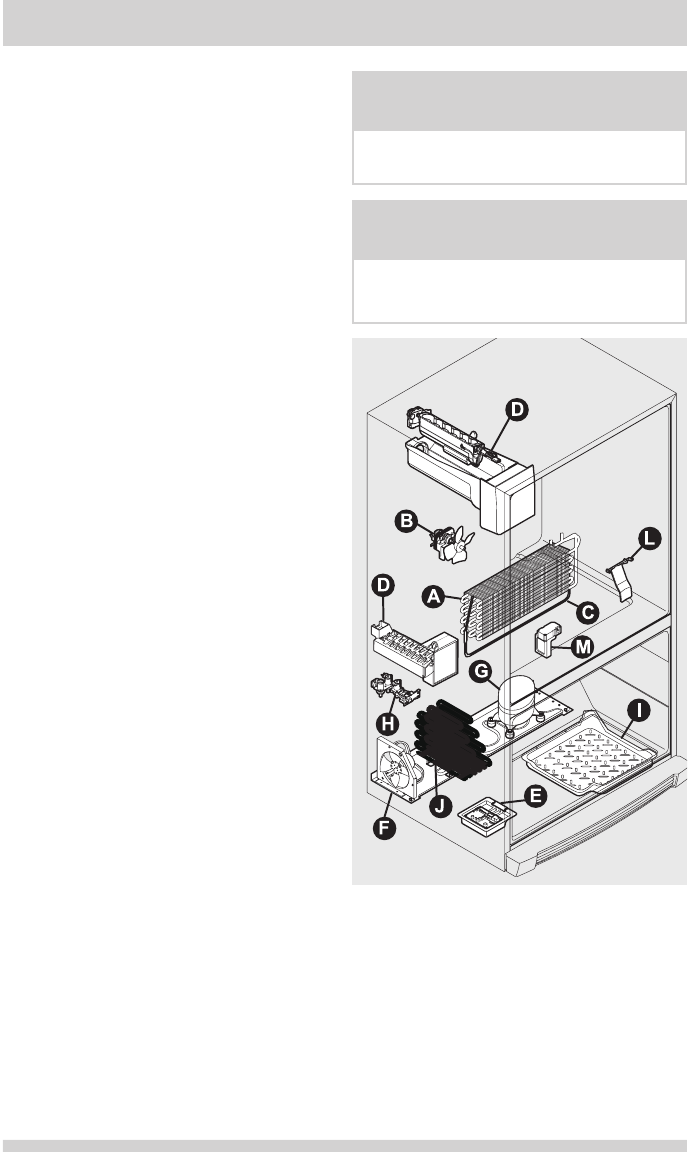
Understanding the sounds you
may hear
Yournew,high-efciencyrefrigeratormay
introduce unfamiliar sounds. These sounds
normally indicate your refrigerator is operating
correctly.Somesurfacesonoors,walls,and
kitchen cabinets may make these sounds more
noticeable.
The following is a list of major components
in your refrigerator and the sounds they can
cause:
A Evaporator Refrigerant through the
evaporator may create a boiling or
gurgling sound.
B Evaporator fan You may hear air being
forced through the refrigerator by the
evaporator fan.
C Defrost heater During defrost cycles,
water dripping onto the defrost heater
may cause a hissing or sizzling sound.
After defrosting, a popping sound may
occur.
D Automatic ice maker When ice has
been produced, you will hear ice cubes
falling into the ice bin. Ice maker fan,
water valve activation, and refrigerant gas
uidmaycreatesoundsfromitsoperation.
E Electronic control & automatic
defrost control These parts can produce
a snapping or clicking sound when turning
the cooling system on and off.
F Condenser fan You may hear air being
forced through the condenser.
G CompressorModern,high-efciency
compressors run much faster than older
models. The compressor may have a high-
pitched hum or pulsating sound.
H Water valve Makes a buzzing sound each
timeitopenstolltheicemaker.
I Drain pan (not removable) You may hear
water dripping into the drain pan during
the defrost cycle.
J Condenser May create minimal sounds
from forced air.
L Ice dispensing paddle When dispensing
ice, you will hear a snapping, clicking, or
popping sound when the solenoid opens
and closes the ice chute.
M Motorized damper May produce a light
humming during operation.
29
NORMAL OPERATING SOUNDS AND SIGHTS
NOTE
Energyefcientfoaminyourrefrigeratoris
not a sound insulator.
NOTE
During automatic defrost cycle, a red glow
in the back wall vents of your freezer
compartment is normal.


















